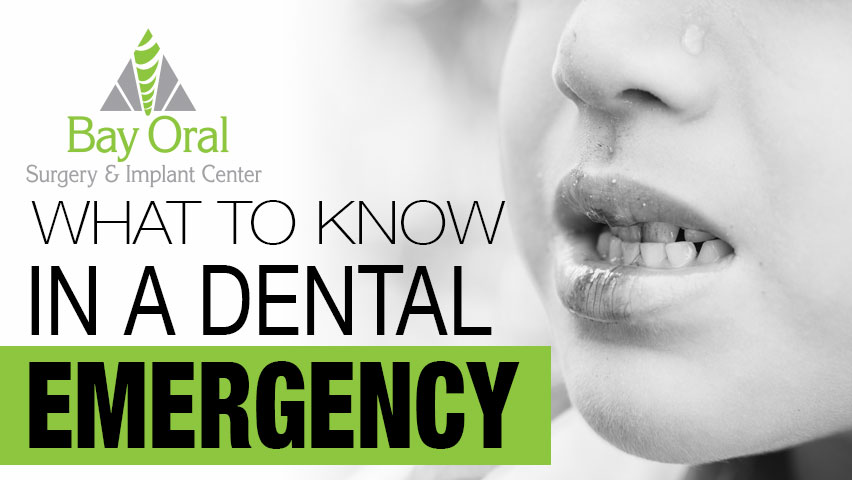
by Bay Oral Surgery | Jan 14, 2020 | Blog

It’s good to know in advance where to go and what to do in the event of dental emergencies, so you are prepared.
There can be a variety of types of dental emergencies and some are more urgent than others. Some of the most common dental emergencies include knocked out teeth, a cracked tooth, toothaches, displaced filling or crown, bitten tongue or lip, something stuck in the mouth and facial trauma or injuries. Here are some tips to keep in mind if you experience any of these issues.
Where to go
In all dental emergencies it is best to see your dentist or an oral surgeon as soon as possible. Most dentists and oral surgeons have someone on-call for emergencies, so keep their emergency number on-hand or call their office and it will likely provide you with a number to call in case of an after-hours emergency. Seeing your dentist will provide you with a more immediate solution–saving you time and money over a visit to the emergency room.
(If you are on vacation or out of town, it is still best to contact a local dentist for your dental emergency. A quick Google search should help you find one.)
What to do
Here are a few tips on what to do in the most common dental emergencies until you can get to a dentist or oral surgeon:
- For a knocked-out permanent or adult tooth, if possible, try placing the tooth back in the socket without touching the root until you can get to the dentist. If that is not possible, place the tooth in between your cheek and gums or put it in salt water or milk until you can get to the dentist/oral surgeon. Never attempt to wipe the tooth off because the attached remnants of the ligament holding the tooth in the jaw are vital to the successful replanting of the tooth. Time is of the essence with this situation, so the sooner the tooth is re-inserted into the dental socket, the better chance it will survive.
- For a cracked tooth, immediately rinse the mouth with warm water to clean the area. Put a cold compress on the face as needed to keep any swelling down.
- For a toothache, rinse the mouth with warm water to clean it out. Gently floss to remove any food caught between the teeth that may be causing the pain. Take a pain reliever to help with the pain until you can see a professional.
- If a filling or crown breaks or falls off you can likely wait a few days to have it fixed or replaced, but call your dentist to let them know the situation and decide.
- For a bitten tongue or lip, clean the area gently with water and apply a cold compress. If the bite is severe, stitches may be necessary and you will want to get to the dentist right away.
- If an object is stuck in your or your child’s teeth, you can try to gently remove it with floss, but do not try to remove it with sharp or pointed instruments.
- For facial trauma or injury it may be necessary to go to the Emergency Room depending on the severity and if there are any other bodily injuries. You may consider calling your dentist or oral and maxillofacial surgeon to meet you there.
The oral and maxillofacial surgeons at Bay Oral Surgery & Implant Center in Green Bay, Marinette and Niagara, Wisconsin are uniquely qualified to manage and treat various forms of facial trauma and injuries. They are on staff at local hospitals and provide emergency room coverage for facial injuries, which include facial lacerations, intra oral lacerations, knocked out teeth, fractured facial bones (cheek, nose and eye socket), and fractured jaws (upper and lower).

by Bay Oral Surgery | Dec 12, 2019 | Blog

The human face is a complex system of bone, muscle, fat, and skin tissues. The intricate relationship between the skin and the underlying muscle and fat tissue plays an essential role in the formation of wrinkles, lines and skin laxity. Botox and fillers are used to compensate some of the changes that happen to the face over time. However, Botox can also be used for the management of migraine headaches and other medical conditions. Botox is a neurotoxin that causes temporary paralysis of the muscle in which it is injected. This paralysis relaxes the muscle and usually helps eliminate some of the overlying skin wrinkles and lines. In certain situations, Botox can also be used to improve the look of your smile. One of the very rewarding uses of Botox is to manage a high smile line, or a “Gummy Smile”, as shown in the pictures below.
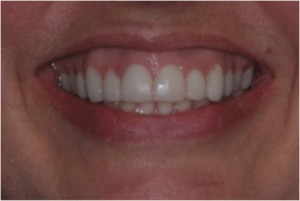
BEFORE
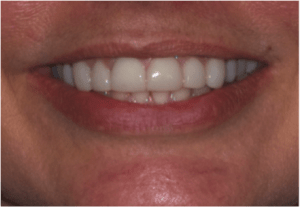
AFTER
In the example above, the patients’ lip was elevating too high, exposing the gingival tissue when smiling, something this patient wanted to fix. The use of Botox in this kind of situation will provide a resolution for approximately 3-6 months.
One of the most common uses of Botox is for the frown lines formed between the eyebrows. Targeting the underlying muscles with Botox will provide temporary resolution.

BEFORE
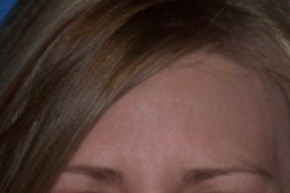
AFTER
In addition to facial aesthetic application, Botox has also been used extensively by multiple healthcare providers for headache relief and other medical conditions.
Fillers are mainly used to replace lost volume. As we age, a significant amount of fat in the facial structure will atrophy, causing unwanted wrinkles, folds, and lines. Just like Botox, fillers’ effects are temporary and can range from 3 months to 1 year depending on the kind of filler used and where it is applied. Most fillers are applied in the lips and areas around the mouth.
Both Botox and fillers may have risks and complications such as unwanted paralysis, need for multiple applications, allergic reactions, bruising, and others. Luckily, complications are rare and can typically be managed successfully.
Patients who desire to have minimally invasive cosmetic procedures like Botox or fillers would require a consultation to be evaluated and discuss their specific needs and wants with the provider. If they were determined to be candidates for the procedure, a customized treatment plan would be created to address their unique needs.
People typically think of dermatologists, medical spas or aesthetician offices for Botox or fillers, but this is a service that Bay Oral Surgery & Implant Center is going to be adding to its list of services in 2020. Stay tuned for an official announcement with more details coming soon!
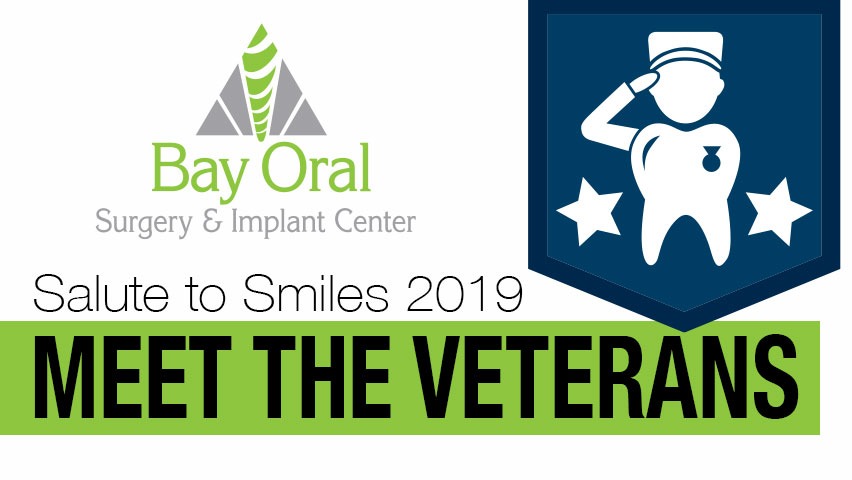
by Bay Oral Surgery | Nov 11, 2019 | Blog
 Now in its fourth year of serving local veterans with Salute to Smiles, Bay Oral Surgery & Implant Center, in partnership with other local dentists, is helping eight local veterans with their dental issues to get their smiles back in 2019. Together, they will cover all expenses for the veterans who otherwise could not afford these much-needed procedures. Dental procedures range from implants and bridges to extractions, crowns and dentures.
Now in its fourth year of serving local veterans with Salute to Smiles, Bay Oral Surgery & Implant Center, in partnership with other local dentists, is helping eight local veterans with their dental issues to get their smiles back in 2019. Together, they will cover all expenses for the veterans who otherwise could not afford these much-needed procedures. Dental procedures range from implants and bridges to extractions, crowns and dentures.
Salute to Smiles began in 2015 and was inspired by Bay Oral Surgery’s former military oral surgeons who saw this as a way to give back to area veterans. Bay Oral Surgery & Implant Center also partners with local dentists and dental supply businesses to provide all of the needed services to the patients free of charge. Twenty-seven local veterans have benefited from this great program since 2015.
Meet the 2019 Veterans!
Donald (Don) Sitte

Don, of Sister Bay, Wisconsin is a veteran of the US Navy. Don served in the US Navy from 1944 until 1966 when he was honorably discharged at the rank of YN3 and then transferred to the Naval Reserves until 1969. Don is having his dental work done by Dr. Graf and Dr. Ellis.
Randall (Randy) Barth

Randy, of Green Bay, Wisconsin is a veteran of the US Marine Corp. Randy served in the US Marine Corp from 1967-1969. He was wounded in Vietnam in 1968. In 2019, Randy was selected to take the Old Glory Honor Flight to Vietnam. Randy is having his dental work done by Dr. Brian Koch and Dr. Bradley Koch.
Claude Haevers

Claude, of De Pere, Wisconsin is a veteran of the US Marine Corp. Claude joined the US Marines in 1963 and served in Vietnam from 1965 to 1966. Claude is having his dental work done by Dr. Matthew Wagner.
William (Bill) Parenteau

Bill, of Superior, Wisconsin is a veteran of the US Army. Bill enlisted in the US Army as a Vulcan Air Defender and served just over 10 years. Bill is having his dental work done by Dr. Brodhagen & Dr. Ellis.
Loyll Plinske
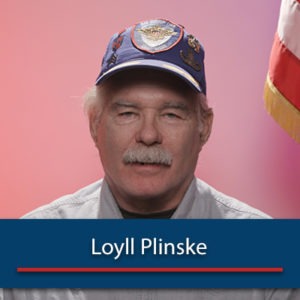
Loyll, of Green Bay, Wisconsin is a veteran of the US Army. He was a sergeant and served part of his time in the 5th infantry division in Fort Bliss, Texas. Loyll is having his dental work done by Dr. Villwock.
William (Bill) Mathis

Bill, of Ashwaubenon, Wisconsin is a veteran of the US Air Force. Bill served in the US Air Force for 4 years in various locations stateside and in Vietnam. Bill is having his dental work done by Dr. Maraka and Dr. Parmar.
Steve Stillman

Steve, of Green Bay, Wisconsin is a veteran of the US Army and served over 13 years for his country. Steve is having his dental work done by Dr. Ulve & Dr. Parmar.
Jayson Haneiwich
Jayson is a veteran of the US Army. Jayson served in the US Army for 6 years doing a tour in South Korea with deployments to both Iraq and Afghanistan. He served as a 63B all-wheel mechanic and was on the recovery team during deployments. Jayson is having his dental work done by Dr. Hallas and Dr. LeMoine.
You can check out the videos of the 2019 Salute to Smiles veterans by visiting: www.bayoralsurgery.com/salute-to-smiles
Thank you!
At Bay Oral Surgery & Implant Center, we are grateful to our veterans and glad we found a small way to give back to them! We also want to recognize and thank everyone who helped make this program a reality—the oral surgeons and dentists who donated their time and services and the sponsors who donated products and supplies.
Bay Oral Surgery Team
Dr. Charles Ellis, DDS, MD (US Navy Veteran)
Dr. Bradley Koch, DDS (US Navy Veteran)
Dr. Vijay Parmar, DDS
Dr. Jason LeMoine, DDS
Dentist & Dental Office Partners
Dr. Brian Koch, DDS (US Air Force Veteran), Oral Health Associates
Dr. Matthew Hallas, DMD, Bay Lakes Center for Complex Dentistry, SC
Dr. Mark Brodhagen, DDS, SC, Brodhagen Dental Care
Dr. Matthew Wagner (Army National Guard), DDS, Robert H. Wagner Family Dentistry
Dr. Eric Ulve, DDS (US Navy Veteran), Green Bay Family Dental
Dr. Bob Villwock, DDS, Bellevue Family Dentistry
Dr. Patrick Maraka, DDS, Dental Arts Associates of Green Bay LTD
Dr. Zach Graf, DDS (US Marines Veteran), Dental Arts Associates of Green Bay LTD
Sponsors
New Creations Dental Laboratory
Straumann
Nobel Biocare
Dentsply Implants
Lord’s Dental Studio
Dental Health Products, Inc (DHPI)
Cosmetic Arts Dental Lab
McKesson
QC Quality Crown & Bridge Studio, Inc.
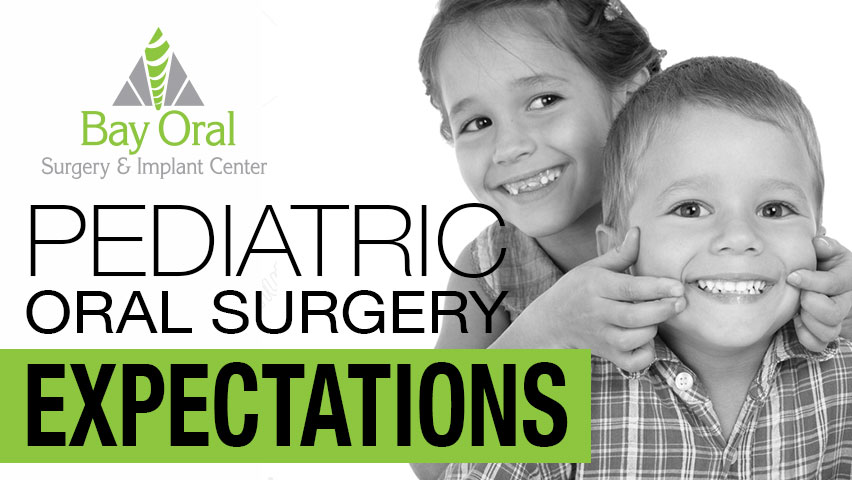
by Bay Oral Surgery | Oct 15, 2019 | Blog

Whether it’s due to an accidental injury or a planned tooth extraction, oral surgery may be necessary for your child at some point. And knowing what to expect for your child’s oral surgery will help reduce any anxiety you or your child may be feeling.
The most common oral surgeries performed on children and adolescents are tooth extractions, frenectomies, exposure of impacted or non-erupted permanent teeth, or for accidental injury or trauma to the teeth or face. If your child has recently been referred for oral surgery, here’s what you can expect from Bay Oral Surgery & Implant Center.
Before the procedure
If oral surgery is needed, it will most likely be recommended by your family dentist during your child’s regular dental checkup appointment. Your dentist will refer your child to an oral surgeon for more specialized treatment. When your dentist refers your child to an oral surgeon, they will provide the surgeon with all of the details regarding the situation and what treatment plan is recommended.
The next step will be visiting the oral surgeon. For children under age 12, or for children with health concerns, the oral surgeon will want to see your child for an exam prior to the procedure. This will ensure they have an accurate medical history and can review the procedure with you. They will explain what to expect, the steps of the surgery, the type of anesthesia that will be used, and answer any questions you may have. They will also provide you with pre-op instructions.
After the consultation, Bay Oral Surgery will check on your insurance coverage for the recommended treatment plan.
In the event of an emergency situation (ex. your child falls and injures a tooth), you should contact your dentist or an oral surgeon immediately and this process will be expedited.
During the procedure
On the day of the procedure you should have your child follow the pre-op instructions provided by the oral surgeon. A parent or legal guardian must accompany your child to the appointment and remain in the clinic for the length of the procedure. During the surgery your child will be under the specialized care of the oral surgeon and surgical assistants. The length of time for the procedure will vary depending on what is being done, but most oral surgeries take about an hour or less.
After the procedure
When the surgery is complete, Bay Oral Surgery will provide you with post-op instructions to follow specific to your child’s procedure. (You can also view our video series of post-op instructions on our website, here.) A parent or legal guardian will need to escort your child home. Your child should try to rest for the remainder of the day. You will be advised to have your child eat soft foods, such as soup and yogurt, until their mouth is feeling better. A follow-up appointment with your oral surgeon is usually not necessary unless recommended by the oral surgeon.
At Bay Oral Surgery & Implant Center we want to answer your questions and make sure you feel comfortable with the entire process, so we encourage you to ask any questions before, during or after the surgery. To get started, schedule your consultation here.
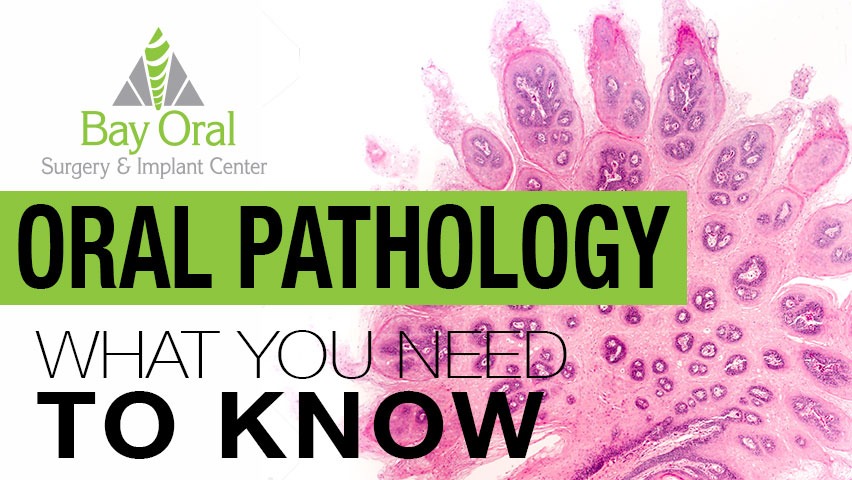
by Bay Oral Surgery | Sep 24, 2019 | Blog

Oral pathology is the diagnosis and study of the causes and effects of diseases affecting the mouth, jaw and face. Many patients visit an oral and maxillofacial surgeon for evaluation and treatment of oral pathology. Generally, these patients are first evaluated by their dental provider who refers them to an oral surgeon for further evaluation and treatment. The scope of oral pathology is extremely vast and oral pathologists, in addition to the dental provider and the oral surgeon, are needed for complete diagnosis, management, and treatment of lesions.
If a patient discovers a lesion such as an ulcer or a bump in the oral cavity, then addressing this lesion is a must.
When a patient presents to the oral surgeon, a thorough review of the patient’s history of the lesion, medical history, medications and supplements, social history, and allergies are reviewed very carefully. After that, the patient is evaluated clinically. The evaluation includes a complete head and neck examination with an oral examination and, in many cases, the use of photography to keep accurate records of the lesion.
Based on the assessment of the patient, the oral surgeon will decide if the lesion requires monitoring, medical management, or performing a biopsy for histopathological evaluation. The specimen obtained in a biopsy is sent to a laboratory where a pathologist will perform a microscopic evaluation and provide a written report that includes the diagnosis. Based on the diagnosis, the oral surgeon will devise a specific treatment for the patient.
A vast majority of oral pathologies are benign and may require simple intervention, medical management and continued monitoring by the dental provider.
One of the most common questions an oral surgeon is asked when evaluating a patient is regarding potential malignancies. Oral cancer, which is the most serious diagnosis in the oral cavity and the most concerning diagnosis for patients, is luckily very rare. Some of the risk factors for oral cancer are smoking, chewing tobacco, excessive alcohol consumption, and certain viral infections.
Although oral cancer is a serious diagnosis, it can be managed with a variety of surgical and non-surgical modalities. Early diagnosis and treatment will significantly improve the prognosis.
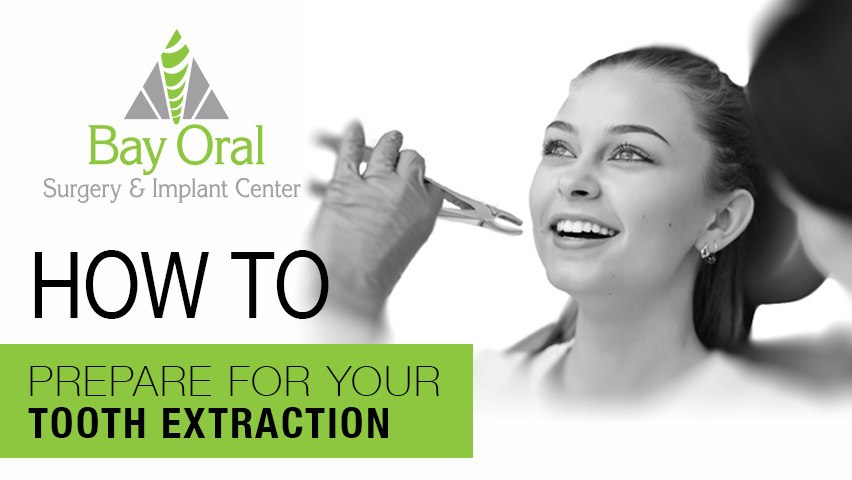
by Bay Oral Surgery | Aug 15, 2019 | Blog

There are many reasons why it may be necessary to have a tooth extraction. Some teeth need to be removed because of overcrowding in the mouth, infection, decay, or damage from a traumatic injury. Regardless of the reason for your tooth extraction, below are some tips to help you prepare.
What to Tell Your Surgeon Before A Tooth Extraction
Before the procedure, you will be asked to disclose the following information:
- Your complete medical history
- Any medications you are currently taking
What to Expect Prior to Your Surgery
Before your extraction, your dentist or oral surgeon will perform x-rays to assess the condition and placement of your teeth, which will be used to determine your treatment plan. Your surgeon will review anesthetic options with you prior to your surgery. Your oral surgeon will also fully prepare you for what to expect before, during, and after surgery. You may also be given other pre-surgery instructions to follow, which could include guidelines such as fasting before the procedure if deep sedation is requested.
For more information on preparing for your appointment, visit our webpage Your First Visit.
What to Expect on the Day of Your Surgery
Before the extraction, your oral surgeon will give you a local anesthetic to numb the areas surrounding the tooth that will be extracted. In some cases, deep sedation may also be administered. Your surgeon will review the typical process of the procedure with you and answer any last-minute questions you may have.
Schedule An Appointment
Do you have additional questions about how to prepare for a dental extraction? Schedule a consultation with one of our oral surgeons to review your options.


















